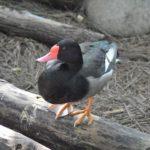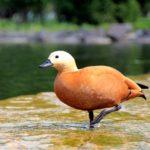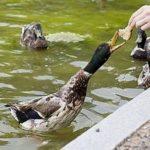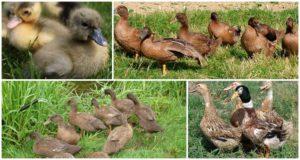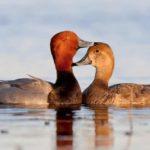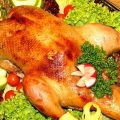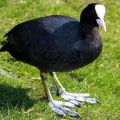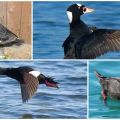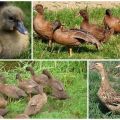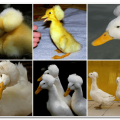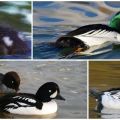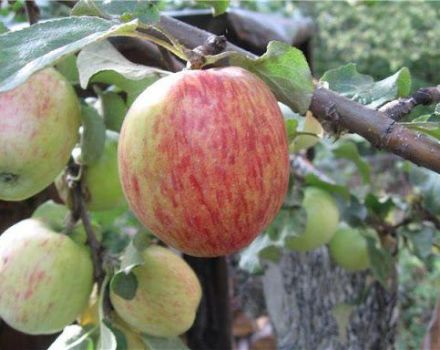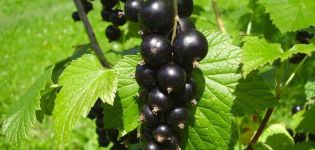Species and descriptions of wild ducks, their habitat and how they breed and what they eat
All over the world hunters love to hunt wild duck for tasty and healthy meat and valuable down. There are a large number of waterfowl species, many of them have long been tamed. Domesticated duck is unpretentious in care and maintenance, produces offspring without problems, only needs a reservoir located close to the poultry house, and a feed rich in proteins.
What does a wild duck look like?
The family of ducks (Anatidae) of the order Anseriformes (Anseriformes) includes about 150 species, divided into 50 genera. Many wild species have long been tamed by humans, are used to obtain meat and fluff, and lay high-calorie eggs. The most common species on the globe are mallard ducks (they are also mallards).
Behavioral and external characteristics common to all wild ducks:
- resettlement near water bodies;
- predominantly nomadic lifestyle (sedentary in a few species);
- inability to soar in the air (the duck is distinguished by a heavy and hasty flight, accompanied by loud cries, frequent and noisy flaps of its wings);
- streamlined body structure, adapted to a semi-aquatic lifestyle, with a small head and neck of medium length;
- light weight (less than 3 kg);
- smooth plumage with grease lubrication, moisture-proof, and a voluminous layer of down;
- a flattened beak adapted to capture food from the surface or in the water column;
- the mouth is equipped with horny plates through which food is filtered;
- sexual dimorphism (the drake outwardly differs greatly from the female, is larger in weight, has a brighter and more interesting color).
Species of birds
The wild duck lives on all continents, which makes hunting convenient. In Russia and the CIS, the common mallard is the most widespread - a desirable object for both commercial and sport hunters. Its dietary meat, rich in vitamins and iron, is suitable for making soups and main courses, served in the best restaurants in the world. You can taste duck meat, for example, in Moscow “Cacciatore”, French “Ecole Valentin”, Prague “Konopiste”.
Soft duck down, characterized by a long service life, is used for the production of bed linen and winter clothing. Some wild species are considered harmful, eating cereal crops, but at the same time destroying insects and weed seeds. Other species are few in number not only due to hunting, but also due to the destruction of habitats.
The most common wild varieties are described in the table:
| Name | Weight, kg | Length, cm | Color | Habitat | Features: |
| mallard | 1,5-1,8 | 60 | the male has an iridescent green head and neck, a brown chest, gray wings and belly; female grayish-brown with black specks | forest and steppe reservoirs | during spearfishing, the duck dives vertically, leaving its tail above the surface of the water |
| black mallard | 0,8-1,3 | 55 | gray body with dark specks, dark crown of the head, light gray cheeks and chest | Sakhalin, Japanese islands, southern regions of Siberia | there are about a million individuals left in the world |
| broad-bearer | 0,6-1 | 45-50 | female is grayish-brown with specks; the drake's head and neck are dark green, the chest is white, the flight feathers are reddish-brown | temperate climatic zone of the northern hemisphere | the duck is silent, quacks only in the moment of danger; beak disproportionately large - up to 7 cm |
| pintail | 0,7-1,3 | 55-65 | female is light brown with black specks; the male has a brown head, white breast, gray back with black specks | open, steppe and tundra reservoirs | the male has a long needle-shaped tail |
| teal whistle | 0,3-0,4 | 35 | mottled brown duck; the drake has a red-brown head, bluish-gray wings, yellow markings on the sides of the tail, the chest is pink | forest and forest-steppe shallow water bodies | the smallest river wild duck |
| teal cracker | 0,4 | 40 | color, like that of a whistle teal, only a wide white stripe passes over the eyes of the drake | temperate territories of Eurasia | the duck got its name for its peculiar cry - rolling, crackling |
| marble teal | 0,4-0,5 | 40-45 | ashy with light specks | lakes and swamps of Southern Europe and Central Asia | the duck is few in number, as its habitats disappear |
| wig | 0,6-1 | 45-50 | reddish-brown duck; drake gray with brown head and white spot on the forehead | forest-steppe and forest-tundra reservoirs from the Far East to Iceland | fly in large flocks, up to 4 thousand individuals |
| killer whale | 0,8-1 | 50 | gray duck with dark specks; the male has a yellowish-green head, a black and white stripe on the neck | Asia | the wings are decorated with long, sickle-curved feathers |
| turn black | 0,6-0,8 | 40-45 | the female is reddish-brown; the male has a white belly, the main color is black with purple-green tints | large bodies of water in Eurasia | the duck is able to dive to a depth of 7 m; the drake's head is decorated with a small tuft |
| gray duck | 0,9 | 50 | the body is gray with black specks on the chest, the tail is black | Eurasia and North America | a drake in flight screams like a crow |
| big merganser | 0,9-2 | 55-65 | the head is brown, the chest and belly are white, the back is black, the wings are gray | forest-tundra reservoirs of America, Northern Europe, Western Siberia | average appearance between a duck and a goose |
| medium merganser | 0,8-1 | 50-55 | duck brown-gray; male has pink-gray breast, black head and back, white belly | northern regions of America and Eurasia | the back of the head is decorated with a small tuft |
| scaled merganser | 1,5 | 55-60 | the head and wings are black, the chest and belly are white, the back is decorated with a bluish mesh pattern, the beak is red | Far East, China, Korean Peninsula | a rare species, there are several thousand individuals left in the world; duck lays eggs in tree hollows |

Lifestyle and habitat
The mallard is found everywhere except in the polar regions. Some species (for example, the mallard) inhabit vast territories, while the range of others is limited to several thousand square kilometers. Wild waterfowl live near stagnant water bodies, shallow rivers with a slow current and marshy areas.
Birds live in reed and shrub thickets, rarely get out on the shore. Despite their shy behavior, many species are found in urban water bodies. They are attracted there by the abundance of food.
Flocks are formed only during the flight. The wild duck prefers a solitary existence, in pairs or in a small group. Couples are created in the spring. Moulting makes males almost indistinguishable from females.Moreover, drakes sometimes molt so intensely that they lose their ability to fly.
The wild duck inhabiting the northern latitudes is a migratory bird. Flies to humid tropical or subtropical regions when the body of water is covered with ice. If the reservoir does not freeze, and there is enough food, the duck can stay for the winter on its native land.
Wild species found in tropical regions are sedentary. They are limited only by flight from arid to more humid areas, covering a distance of several hundred kilometers.
What do they usually eat?
Some wild species forage in the coastal zone, others in the water column. The diet includes both plant and animal foods:
- seaweed;
- planktonic crustaceans;
- tadpoles;
- fry;
- coastal grass seeds;
- insect larvae;
- shellfish.
A duck, whose diet is dominated by plant foods, has horny plates on its beak, with the help of which it filters the ingested water. Small fish is simply swallowed. Duck spatulate beak for the convenience of plucking plants and algae. Domesticated birds are fed so that the diet is roughly similar to that of the wild. The feed should be rich in proteins and plant components.

Tamed birds must be given coarse river sand. It is necessary for grinding food entering the stomach.
An approximate list of feeds:
- millet, barley;
- grass, algae, duckweed;
- boiled potatoes;
- fish, snails, slugs;
- sunflower cake;
- meat and bone meal;
- shell rock, chalk;
- feed yeast.
How do ducks breed in the wild?
The mating season for wild birds begins at different times, depending on the species and climatic conditions. In migratory species, reproduction begins after returning to their native places. Sedentary species breed after the arrival of comfortable weather, when the heat subsides, the amount of green food increases.
Drakes ready for mating take on bright colors. Each species has its own courtship rituals. Some males fluff up their feathers and crests, others scream, and still others dance on the water. The pair is formed for one season. Duck makes clutch for broods in thickets of coastal vegetation. Incubates eggs for 3-4 weeks.
The first days the duck sits in the nest without leaving, after a week it begins to leave it for a short time to feed, but before that it carefully insulates it with fluff. The drake is not involved in hatching and raising offspring.
The wild duck lays eggs with a long time interval, but they hatch with a difference of only a few hours. This is due to the fact that late embryos develop faster than early ones. Pecking lasts 12-14 hours, all this time the duck does not leave the nest. Ducklings are born strong and independent. Having dried up, they go with their mother to the reservoir to feed.
When do they start flying?
Wild ducklings grow quickly, by autumn they become adults, indistinguishable from their parents. The first flight is practiced 55-60 days after birth. The duck stays with the ducklings for about 2 months.
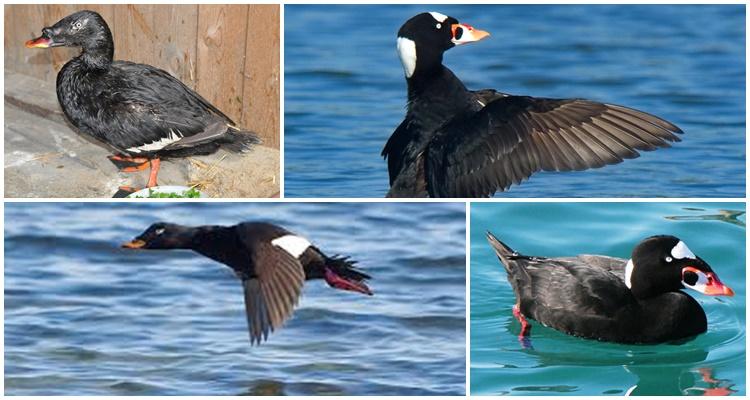
Natural enemies
Many wild ducklings fall prey to predators. They are hunted by:
- crows and magpies;
- birds of the hawk family;
- seagulls;
- foxes;
- wild jungle cats;
- otters and martens;
- raccoon dogs;
- large predatory fish;
- snakes.
A duck that has lost its brood lays its eggs again in someone else's or in its renewed nest. But re-clutching is rarely numerous. Chicks can die in the nest when the water level in the reservoir rises sharply. Adults are at risk of parasitic diseases and avian flu.
Wild duck hunting
The main hunting object is the mallard. It is supposed to hunt in the summer-autumn season, but each region has its own terms of fishing. Drake prey is preferable, since females take care of the offspring, their overkill can negatively affect the population. You can hunt wild duck:
- from the approach;
- with decoy duck;
- with dog;
- per flying duck.
The mined carcass is scalded with boiling water, plucked, singed. Before singing, it is advisable to wipe it with flour so that excess moisture is gone.
When were they domesticated?
The first domestic ducks appeared in Southeast Asia about 3 thousand years ago. After 5 centuries, the ancient Greeks and Romans began to domesticate wild birds. At first, the birds were kept in mesh fences, gradually the ducks grew fat, became heavier, and lost the ability to fly. Having discovered the North American continent, the Europeans discovered the muscovy duck, which was also domesticated and spread throughout the world.
In Asia, wild duck was raised for its meat. In Europe, duck products were not popular, and therefore breeding was not massive. From the 19th century, Europeans began to use ducks as a living decorative element for park and backyard ponds. Domesticated duck multiplies without problems on the farm, not capricious in the care and maintenance. The main thing is the presence of a corral for walking and at least a small reservoir.
